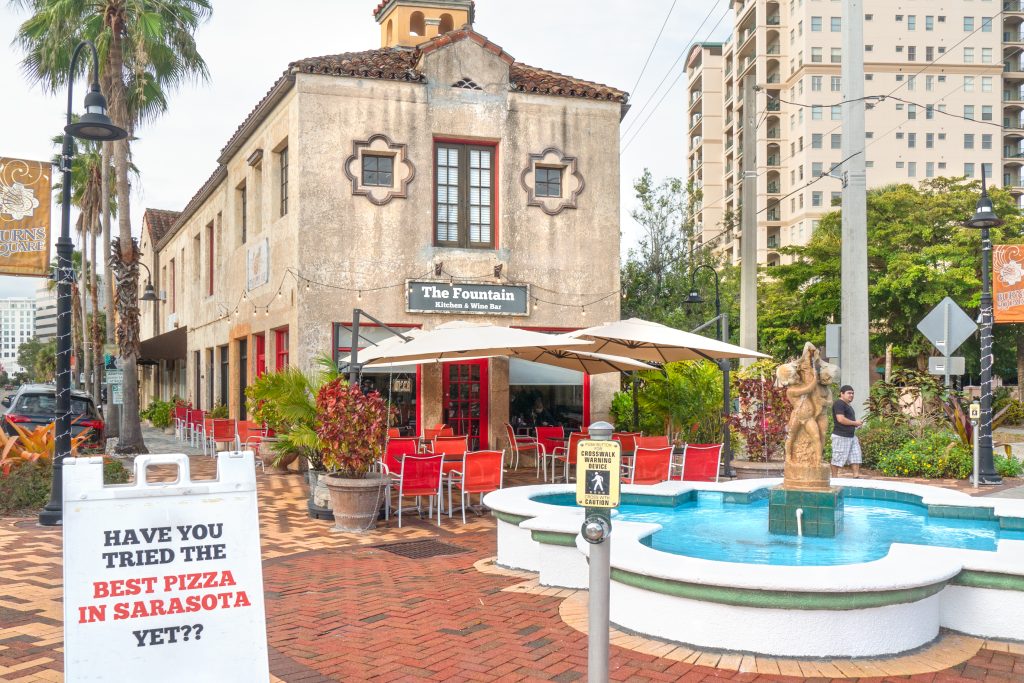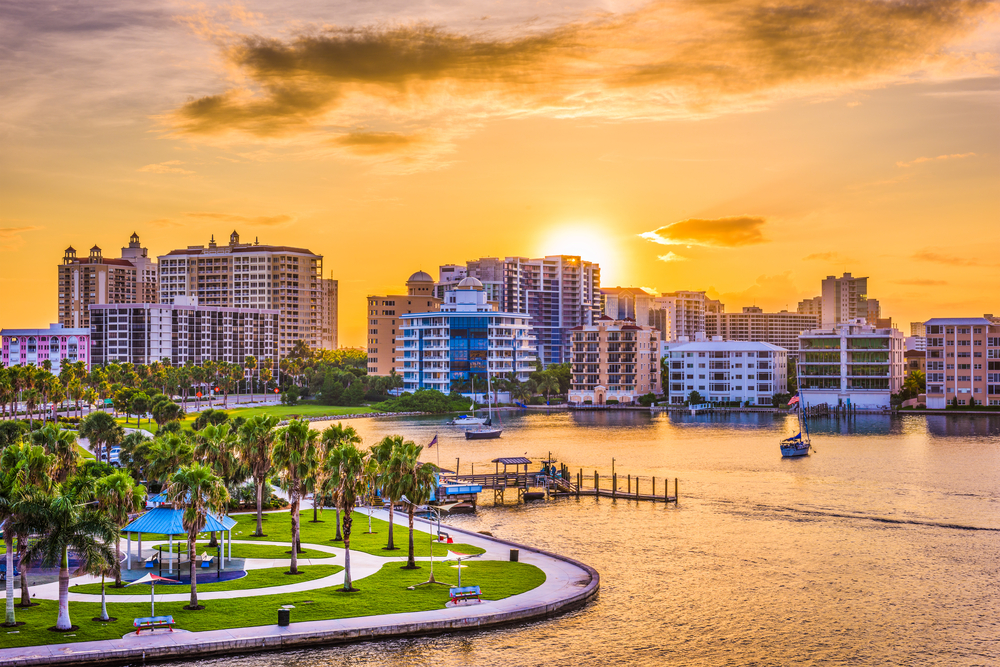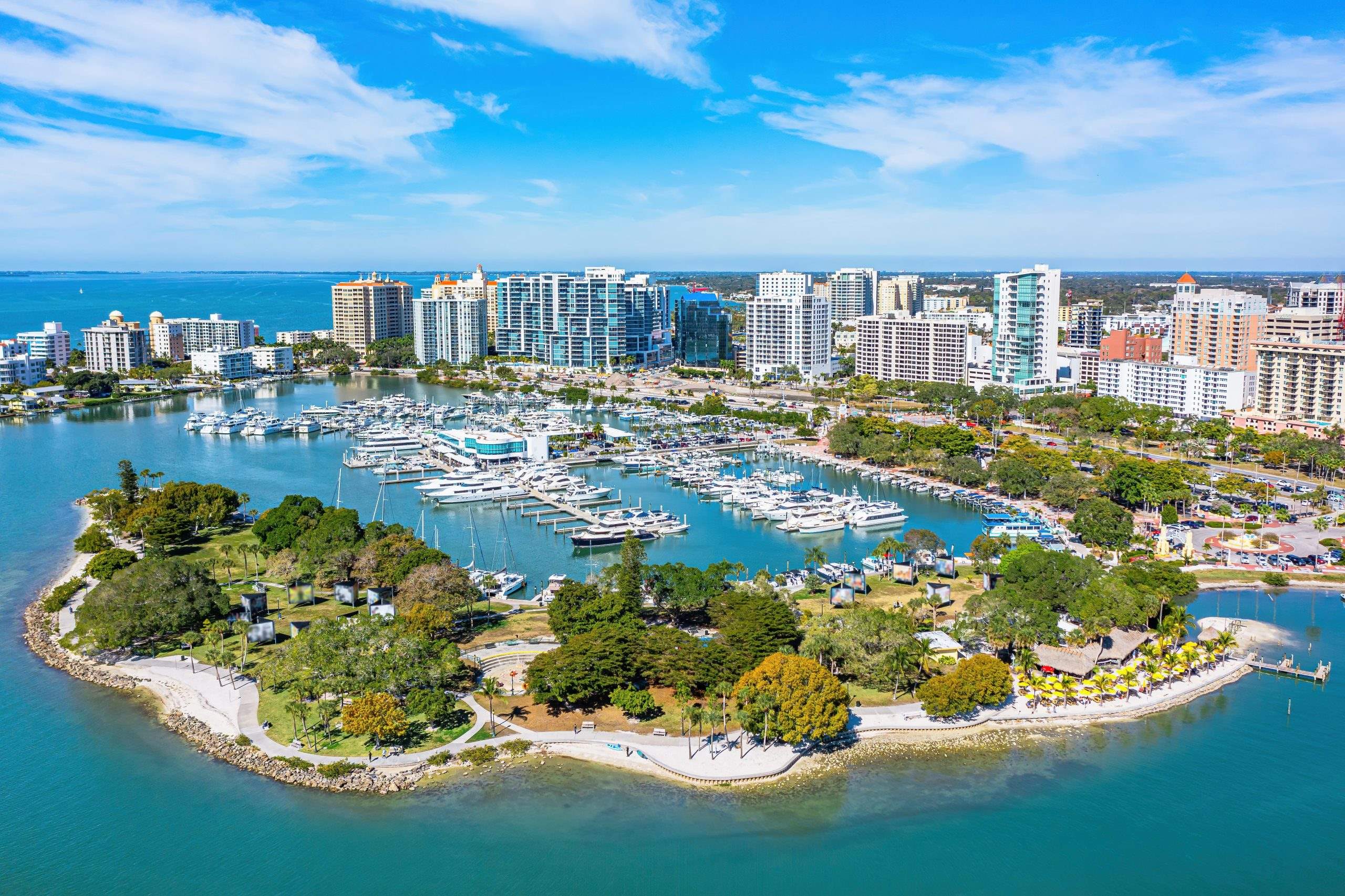Nestled into the Gulf Coast, Sarasota’s beaches and weather might have just the lifestyle you’ve been longing for. Before you pack your things and plan your move, you should know the cost of living in Sarasota, Florida is 11% higher than the national average. Read on to learn more about whether our idyllic city fits into your budget!

Housing Cost of Living in Sarasota, Florida: Expensive
Housing is one of the few things that’s more expensive in Sarasota versus the rest of the country. If you move here, you’ll pay 68% more for rental housing than other parts of the country, on average. A 2-bedroom apartment rental costs about $1,294 according to the national average, but in Sarasota, you’ll pay $2,175.
The median home value in Sarasota has risen to $482,283, versus the national average of $349,816. For your mortgage, you’re looking at about 5.29% for a 30-year fixed loan. The current average across the US is 6.45%, so you’re in luck there. There’s more good news: food is the only other category which is more expensive than the rest of the country.
Utility Cost of Living in Sarasota: Average
Generally speaking, your utilities will cost the same or a little less here than in other places in the US. Your energy will cost around 14% less than the national average, no matter which provider you have. You’ll pay 12.02 cents per kilowatt versus the average of 13.99 cents.
Your water bill will be about the same in Sarasota compared to other US cities, which is about $71 for the average American. We expected water bills to be exponentially higher here due to our warm climate, but we were pleasantly surprised!
Finally, your monthly phone payment in Sarasota should be comparable to the rest of the country. Whether you prefer a basic plan or you spring for unlimited talk, text, and data, any carrier you choose will charge about the same price as you currently pay.

Food Costs in Sarasota: Expensive
Groceries in Sarasota will cost you about 10% more than the national average. Keep in mind, though, that seafood here is quite a bit cheaper thanks to our location right on the Gulf of Mexico.
Whether you prefer restaurants or getting take-out, you’re likely to spend a bit more in Sarasota than in other places. A single take-out item that costs $10 on average will cost you $13 here. Dining out can cost anywhere from $24 – $45 per person in Sarasota, versus the national average of $18.
Price of Healthcare in Sarasota, Florida: Affordable
On average, each American spends $1,044 on healthcare each month. That includes insurance premiums, co-pays, pharmacy visits, and veterinary appointments for any furry friends. Altogether, a doctor’s visit in Sarasota will cost you about $131 versus the national average of $171. Your health insurance is a major factor in what your cost will be. But even if you pay out of pocket, Sarasota healthcare is cheaper than many other US cities.
Your standard dentist appointment in Sarasota will run you about $112, while the country’s average is $200. These costs also take cleanings, x-rays, and cavity fillings into account. While your price at the pharmacy will mostly depend on your insurance plan, Sarasota’s pharmacies are generally cheaper. In the US, you’ll spend an average of $1,200 per person on pharmaceuticals. But here in Sarasota, it’s a mere $522.
On average, you’ll spend $56 for a typical visit to a Sarasota vet. The average national price for a cat or dog’s usual check-up is around $55, so vet prices here are pretty average. Just like your health insurance, pet insurance can have a huge impact on what your own costs will be.

Transportation Costs in Sarasota: Affordable
Especially with the rising costs of gas, transportation costs are a big concern when you’re planning a move. The average American spends about 16% of their monthly budget on transportation, an average of $819. Luckily, transportation is a very affordable aspect of the cost of living in Sarasota, Florida. The national average gas price is $4.81 per gallon of regular unleaded, while you’ll only pay about $4.44 per gallon here.
If you prefer to get around with public transportation, you’ll still save some money. The average cost of a monthly bus pass in the US is $58.53. Across our entire county, 30 days of unlimited rides will cost you only $40 at any ticket outlet. Basically, no matter how you like to get from Point A to Point B, you’re likely to spend less here than you do in your current location.
Price of Storage Units in Sarasota, Florida: Affordable
Trying to perfectly align your move-out date with your move-in date is always so stressful. The easiest way to help everything go smoothly is by renting a secure, temperature controlled storage unit for your belongings.
In the US, the smallest storage units cost an average of $90 for 50 square feet. The bigger your unit, the less you’ll pay per square foot. At Hide-Away Storage, our 5’ x 10’ units start at just $55. We have locations across Sarasota to make moving to your new home as simple and convenient as possible.
Average Household Income Vs. Cost of Living in Sarasota, Florida: Affordable
The average household income for the US in 2020 was $97,026, according to the US Census. The average annual cost for a single adult to live in Sarasota is $37,143, and the average household size is 2. So, while the cost of living in Sarasota, Florida is a bit higher than the national average, households earning an average income will find this area affordable.
The Bottom Line
As a whole, the cost of living in Sarasota, Florida is a bit more expensive than most other parts of the country. That’s why it’s so important to find affordable, temperature controlled storage units. If you’re planning on moving to one of the best neighborhoods in Sarasota anytime soon, check us out here at Hide-Away Storage. Our locations offer access 7 days a week, 24-hour gated electronic access, plus no long-term contracts, admin fees, or deposits. We hope to call you our neighbor soon!
This article was originally published on 06/03/2021. It was updated on 10/05/2022.
Check out more articles on our favorite Florida cities:




